
George Grunert was a United States Army cavalry officer who worked his way up through the ranks from private to retirement as a lieutenant general. His 47-year career extended from the Spanish–American War to the end of World War II.
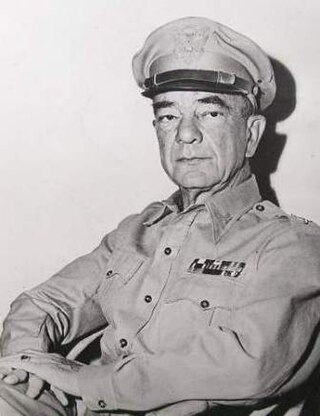
Daniel Isom Sultan was an American general. Sultan was born in Oxford, Mississippi, and graduated from the United States Military Academy in 1907. He entered the United States Army Corps of Engineers and rose through the ranks, teaching engineering at West Point from 1912 to 1916, before travelling to the Philippines. He oversaw construction of fortifications on various islands, and eventually was in charge of all US Army fortification work in the Philippines. He then served on the War Department General Staff and the general staff of the American Expeditionary Forces until 1922. Sultan led the Nicaragua Canal Survey and commanded American troops in the country from 1929 to 1931, when he returned to the United States and wrote a report on the canal.

General Alexander McCarrell Patch was a senior United States Army officer who fought in both world wars, rising to rank of general. During World War II, he commanded U.S. Army and Marine Corps forces during the Guadalcanal Campaign in the Pacific, and the Seventh Army on the Western Front in Europe.

General William Hood Simpson was a senior United States Army officer who served with distinction in both World War I and World War II. He is best known for being the Commanding General of the Ninth United States Army in northwest Europe during World War II.
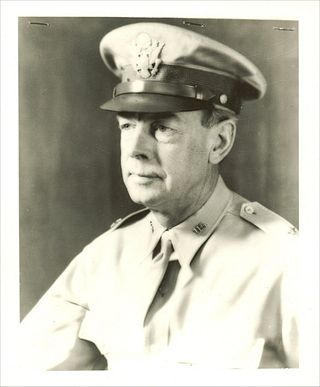
Henry Conger Pratt, professionally known as H. Conger Pratt, was a major general in the United States Army. He was awarded a Distinguished Service Medal with one oak leaf cluster, and received awards from Italy, Brazil, and England. He is the only person in American military history to command both an air force wing and an army division.

Major General George Hamilton Cameron was a United States Army officer who had a military career spanning over forty years, at the end of which he attained the rank of major general. Despite serving in numerous conflicts, perhaps his most notable service came in the final years of World War I, where he served as the first commander of the 4th Division, which he later commanded on the Western Front in mid-1918, before being promoted to the command of V Corps, which he led during the short Battle of Saint-Mihiel and then in the early stages of the Meuse–Argonne offensive, the largest battle in the U.S. Army's history, before he was suddenly relieved of his command.

Edwin Albert Zundel was a United States Army brigadier general who served on the Western Front during World War I, in the Southwest Pacific Area during World War II, and as Inspector General, Far East Command, and Inspector General, United Nations Troops—Korea during the Korean War. He was a member of the West Point class of 1915, "the class the stars fell on" that also included Omar Bradley and Dwight Eisenhower.

Major General Vernon Evans was an officer in the United States Army who had a long and distinguished military career spanning almost four decades, from 1915 to 1954. A 1915 graduate of the United States Military Academy (USMA), he served in combat in France during World War I, advanced through the ranks and attended the required professional schools between the wars and served in staff and command positions during World War II, including command of the lesser known China Burma India Theater (CBI). After the war he served as the inspector general of United States European Command and headed the military mission that supported the Shah of Iran. He retired as a major general in January 1953. Evans died on 4 November 1987, aged 94, of kidney failure in Bethesda, Maryland.
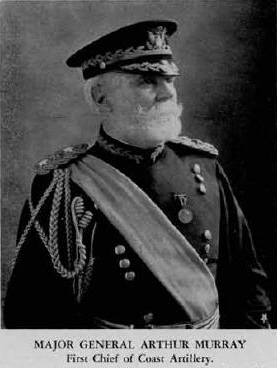
Arthur Murray was a career U.S. Army artillery officer and major general in the United States Army. He was notable for his service as Chief of Artillery for the United States Army Artillery Corps, and the first Chief of United States Army Coast Artillery.
The 1917 New Year Honours were appointments by King George V to various orders and honours to reward and highlight good works by citizens of the British Empire. The appointments were published in several editions of The London Gazette in January and February.
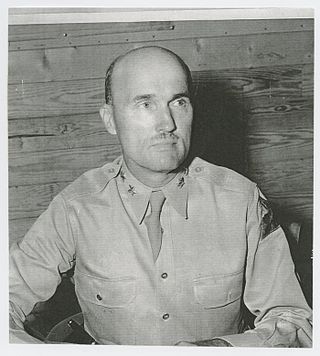
Major General Carlos Brewer was a United States Army officer who commanded the 12th Armored Division during World War II. After training the 12th Armored Division, he was not permitted to command the division in combat due to his age, so he requested his rank be reverted from major general to Colonel so that he could become an artillery officer in the European Theater of Operations (ETO). He innovated the method of field artillery targeting used in World War II, and implemented triangular organization of divisions.

Major General Ira Thomas Wyche was a career officer in the United States Army who ultimately became Inspector General of the United States Army. A graduate of the United States Military Academy at West Point, during World War I he served in the American Expeditionary Forces (AEF) on the Western Front, and returned to the United States to train artillery students. He spent time teaching and attending various army schools from 1918–1942; including the United States Army Command and General Staff College and United States Army War College.

William Payne Jackson was a career officer in the United States Army. A veteran of the American Indian Wars, Spanish–American War, Philippine–American War, Moro Rebellion, Pancho Villa Expedition, and World War I he attained the rank of brigadier general during his career and major general on the army's retired list.

James Lawton Collins Jr. was a brigadier general in the U.S. Army who served in World War II, the Korean War and the Vietnam War, a military historian, and a viticulturist. He was the son of Major General James Lawton Collins, nephew of General J. Lawton Collins, who served as Chief of Staff of the Army during the Korean War, and older brother of Apollo 11 astronaut Major General Michael Collins. He led a North Dakota National Guard artillery battalion in Normandy in 1944, and served as the U.S. Army Chief of Military History from 1970 to 1982.

Louis A. Craig was a career officer in the United States Army. He attained the rank of major general, and served in both World War I and World War II. Craig served as a corps and division commander during World War II and was the Inspector General of the Army from 1948 to 1952.

John Fisher Preston Jr. was an American army officer who rose to the rank of Inspector General of the United States Army. His first conflict was the Spanish–American War serving in the 7th Infantry, and fighting in the Battle of San Juan Hill and Siege of Santiago. For his service in the war, Preston received the Silver Star. He then spent around a decade serving at various forts in the Philippines and across the United States. Preston was involved in the Quartermaster Corps and the Pay Department until the outbreak of World War I, serving a couple of years in France. He attended various Army schools until 1923, and had various leadership positions in the Army over the next fifteen years, culminating in appointment as Inspector General in 1931. After a four-year tenure and brief stationing at Fort Sam Houston, he retired from the army in 1936 and entered the banking industry in San Antonio. He died on July 1, 1960.
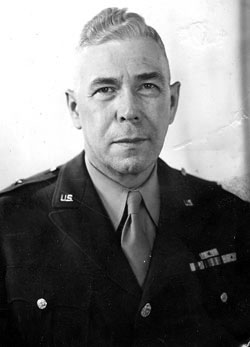
Jesse Amos Ladd was a United States Army general who served in World War I and World War II.

John H. Hughes was a career officer in the United States Army. He attained the rank of major general, and was most notable for his command of the Philippine Division (1937–1938) and the Philippine Department (1938–1939). A veteran of the Spanish–American War, Philippine–American War, and World War I, Hughes served for 43 years beginning 1897. After retiring in 1940, he was recalled to active duty for World War II and served at the Department of War from 1941 to 1945.

William Bryden was a career officer in the United States Army. A veteran of the Philippine–American War, Pancho Villa Expedition, World War I, and World War II, he attained the rank of major general and was three-time recipient of the Army Distinguished Service Medal. Bryden was best known for his assignment to several senior command positions, including the 15th Field Artillery Brigade (1918), 9th Field Artillery Brigade (1918–1919), 16th Infantry Brigade and Fort George G. Meade (1937–1938), 13th Field Artillery Brigade and Fort Bragg (1938–1940), Deputy Chief of Staff of the United States Army (1940–1942), Fourth Corps Area (1942), Fourth Service Command (1942–1944), and president of the Secretary of War´s Separation Board (1944–1946).

John Hamilton Hinds was a United States Army major general who commanded the artillery of the 2nd Infantry Division in World War II and that of the 1st Cavalry Division in the Korean War. He was one of the two Army members of the Atomic Energy Commission's Military Liaison Committee from 1946 to 1949.




















